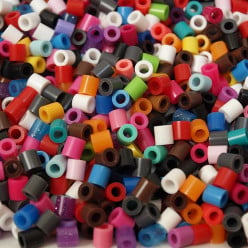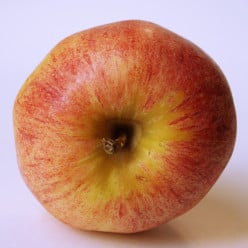Topic Saturation and New Hubs
I'm interested in some opinions here.
Let's say you have an idea for a Hub. But in your research process you quickly realize you already have another Hub ranking for the topic you intended to focus on. Even though the old Hub isn't about the same topic exactly, search engines seem to think it is close enough to be useful.
In other words, by writing the new Hub you are competing with yourself. While search engines should be able to figure out that your new Hub better addresses the topic, realistically that doesn't always happen. And even if it does, at least some of the traffic the new Hub gets will be taken from your old Hub.
So, would you:
A) Write the new Hub anyway and let the search engines straighten it out.
B) Edit the Hub that is already ranking to better address the new topic.
C) Do nothing and be happy with whatever traffic you are getting for any search terms.
D) Write the new article for another site (Wizzley, etc) so you don't mess with your HubPages mojo.
What's your opinion?What Kylyssa said about Hubs "feeding each other". I'd probably write a second Hub that went into the topic in more depth, then interlink them (i.e. refer to the other Hub in the text of each one).
Reason? I'd be frightened that while editing, I delete the sections that were attracting search engine traffic.
If the currently ranking hub can be extended to fit the additional information in a good useful way, I'd recommend that option first.
Most of the data I've seen supports this. Extending, updating and keeping an article fresh is the best way to preserve and grow traffic.Thanks Paul. I was hoping you'd have some advice! :-)
So, using an example from your portfolio: If you noticed your Hub on gifts for 5-year-old-girls was ranking highly for the term "Gifts for 6-Year-Old Girls" would you add advice on choosing gifts for 6-year-old to the 5-year Hub?
Or, in that case would it make more sense to write another Hub about 6-year-olds and link it early in the text of the 5-year Hub?
That example is actually pretty similar to what I usually encounter.I just realized you have the 6-year-old version written too, so I guess my example isn't exactly accurate. But I hope you get what I mean.
I wrote the hubs as each of my daughters was turning a new year a long time ago. Had I had it to do over, I'd have written one hub for gift ideas for 5 to 8 year olds and broken it out into logical sections.
"B" is a good choice and does make sense with Paul's explanation. I would still be tempted, however, to write the new hub and link to the old one. I had a couple of similar situations with two sets of hubs: a) annoying, self-centered people (first hub) and b) parenting self-centered children (second hub) and a) tithing fears (first hub) and b) time, talent, and treasure (second hub). The first set worked out pretty well, the second set do okay. I guess it depends on how much new content you have and whether a hub might become too long and require two hubs. But I do understand wanting to keep up momentum of a good engine with proven performance by adding more fuel.
If the new material allows you to keep a tight focus on the original topic, add it to the hub. If the new material has a different focus, write a new one. If you are adding detail and depth to the original subtopic, it belongs on the original piece, but if you are adding a new subtopic, you probably ought to write a new piece.
For example, if you have an existing article about chocolate cake, add the new material to it if it's about chocolate cake, but if it's about yellow cake, transporting cakes, or about chocolate frosting, write a new hub. If you have an existing article about chocolate cake and you have new material about chocolate cake, add it to the existing hub.
I have over twenty hubs about homelessness, but each answers a different question. They don't compete with each other; they feed each other.Smart thinking on your part. Inter-related pieces always benefit each other.
Eric, I know you tend to write on similarly-themed subjects (like your birds and squirrels) as I do (only the bulk of my work is on murderers and women in history). I also write series focusing on specific topics (not here, yet). Instead of thinking about each individual article think of them as a collective (my series, "Why I am Madly in Love with . . . ", for example, has nearly 30 articles in it. Some perform better than others but the whole is definitely greater than the sum of its parts as they are all interlinked). You need to think of what you do as a body of work--a portfolio, as it were--and not just a loose aggregation of material. I'd go ahead and write it and post it on HP--you already have similar material, right, so the older things would pop up in the "related" section, yeah?
I think I got into a similar tangle just the other day. I was going to add a new photo to my article on knee replacement surgery, as I had just re-found the photo the doc gave me following a subsequent procedure.
However, after I added it, I discovered I had already addressed that procedure, and really, all that was missing was the photo.
I then realized that the text I had before was not as good as what I put in recently, and I aim to combine those sections.
I've not done so yet, as it was late and I was tired. It's on my list for today....
In another matter, I recently edited my hubs on genealogy, and found that really, one of them needed to be split into two separate articles, so that is now done, and the others appropriately edited (I hope!).
I have no delusions, however, about getting much traffic from those latter hubs, as that topic is fairly well saturated on the Internet, anyway. I only hoped to add a different slant or way of looking at the research process and the forms used. Maybe it's enough; maybe not.
Related Discussions
- 101
Featured hubs vs non-featured hubs and Google Traffic
by Lena Kovadlo 12 years ago
If a hub is not featured does that mean that it doesn't get any search engine traffic from Google or other search engines?
- 19
Do you submit your hubs more than once to the same social site?
by kelleyward 13 years ago
Just wondering if it is spamming to submit your hubs to the same social networking sites more than once? For example, if you wait a week or so between and you are trying to get your hub more traffic can you submit it again to Twitter or Facebook? Or is this a bad idea. Also if so then how long...
- 34
Ranking on Search Engines other than Google
by Brandon 12 years ago
I just realized that my Hubs get absolutely no views from Bing and Yahoo; however Google on the other hand still happens to send around 400 a day. Any idea why this is happening? One particular hub actually ranks extremely well on Google and gets me 50% of my traffic, I just searched for similar...
- 245
Idling and pending hubs are killing traffic
by Yvonne Spence 12 years ago
I love HubPages, I feel that I have learned so much here and my confidence in writing non-fiction took such a huge leap when I was invited onto the Apprenticeship program last year. I have met some wonderful people here - both staff and other Hubbers. But as may other people have said, the idling...
- 20
How do you get traffic for your hubs at Hubpages and earn more money?
by Jonathan Cooper 7 years ago
I attempt to try my best to improve my traffic and increase my earnings of Google Adsense, but it seems that I can still earn only a little per day. Do you have any tip and suggestion on how to get more traffic for your hubs at Hubpages?
- 31
Does it take a while to see traffic to your sites?
by jfay2011 13 years ago
I am starting to learn how to social bookmark. I've been doing it on twitter, facebook, igoogle, digg, delicious, diigo, my blogs, pingomatic and a few other places. I have only been doing it on some of these sites for the last four or five days. It probably takes a while to see...












